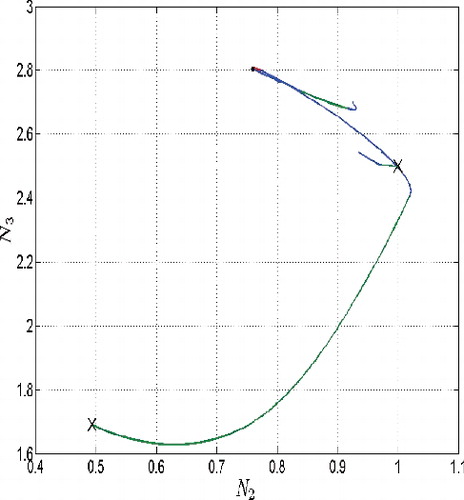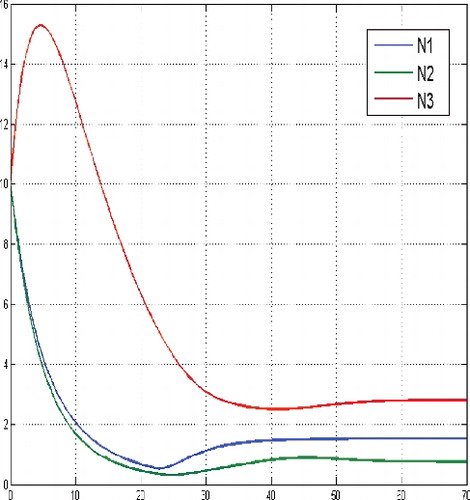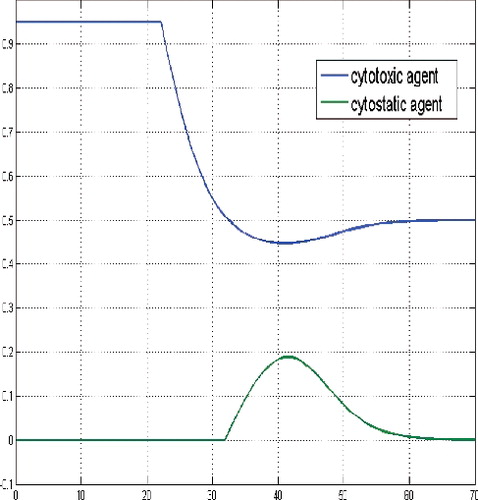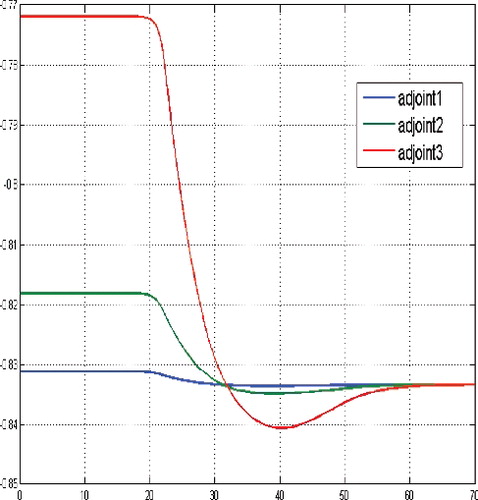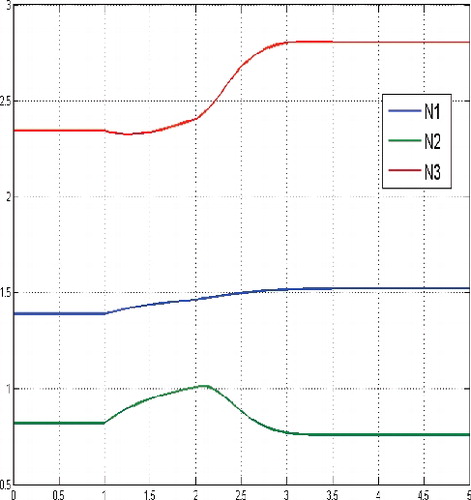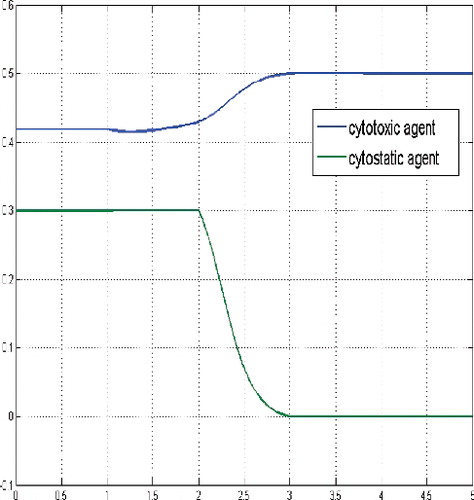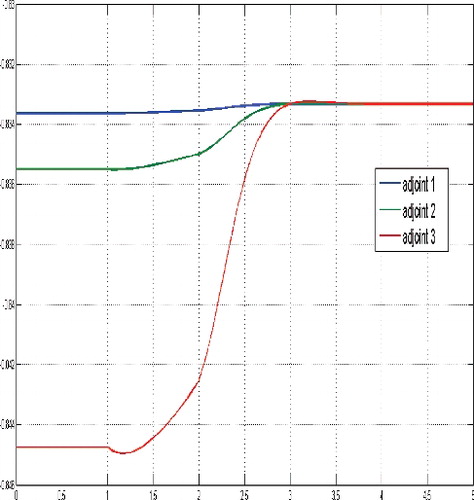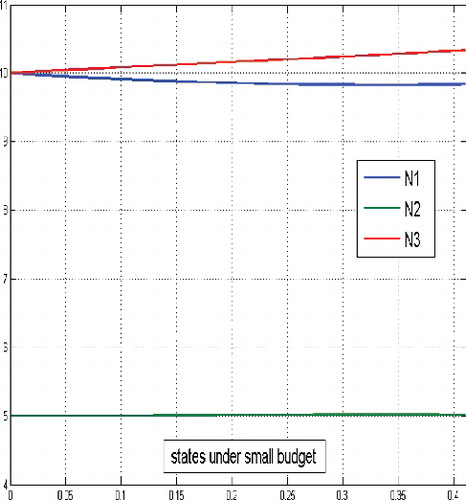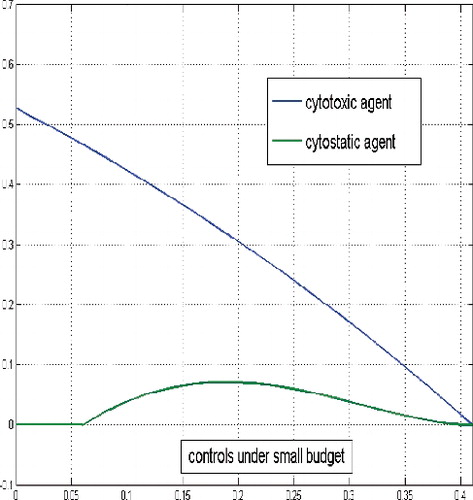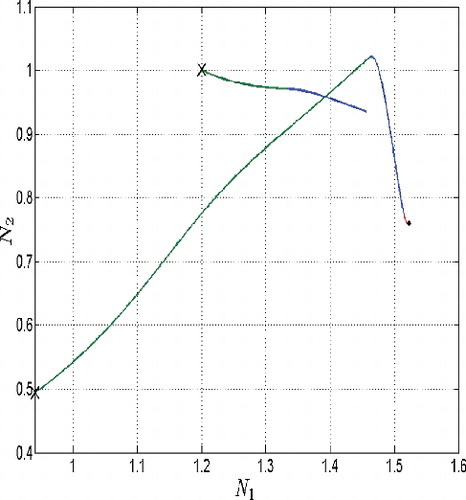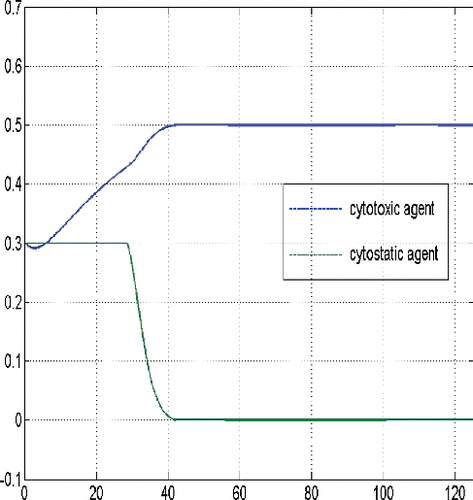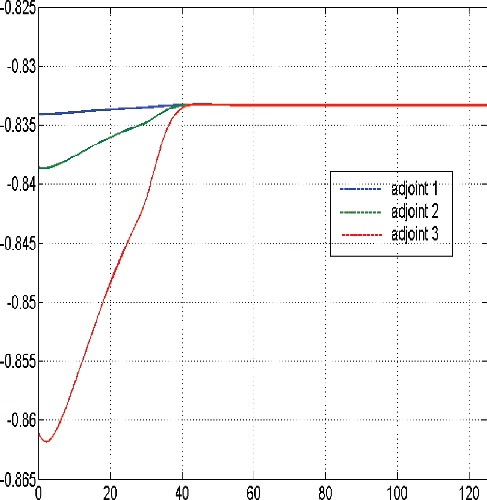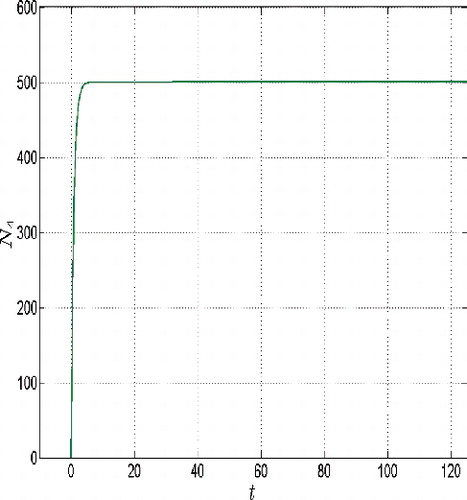Figures & data
Table 1. Parameter set used in Schättler and Ledzewicz (Citation2015) for the corresponding finite horizon model.
Table 2. Parameter set for the infinite horizon model presented here
Figure 4. States for a sufficient large budget and large initial tumor cells population, i.e. N(0) = (30, 30, 30).
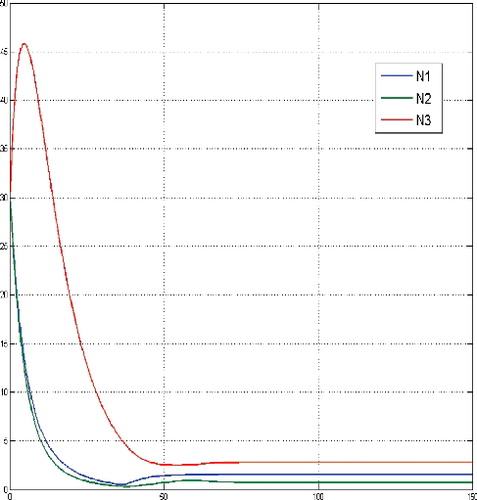
Figure 5. Controls for a sufficient large budget and large initial tumour cells population, i.e. N(0) = (30, 30, 30).
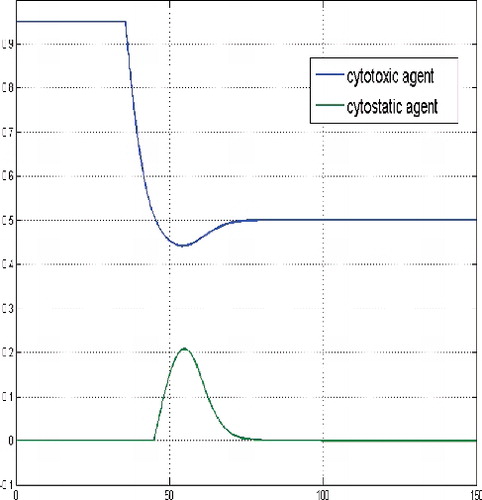
Figure 6. Adjoint functions for a sufficient large budget and large initial tumour cells population, i.e. N(0) = (30, 30, 30).
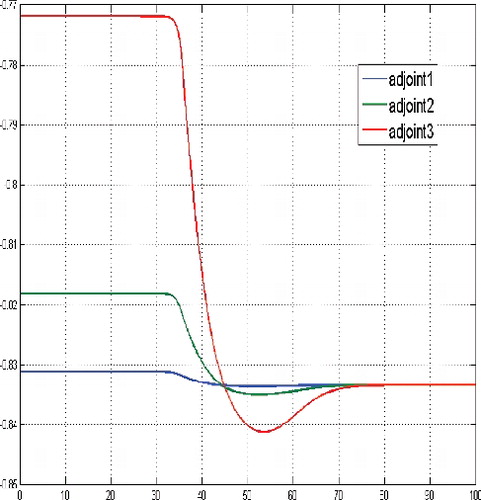
Figure 10. States for a sufficient large budget and initial state near the equilibrium level, here N(0) = (3, 3, 3).
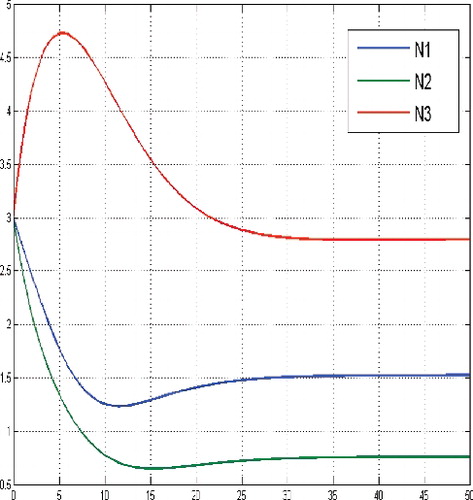
Figure 11. Controls for a sufficient large budget and and initial state near the equilibrium level, here N(0) = (3, 3, 3).
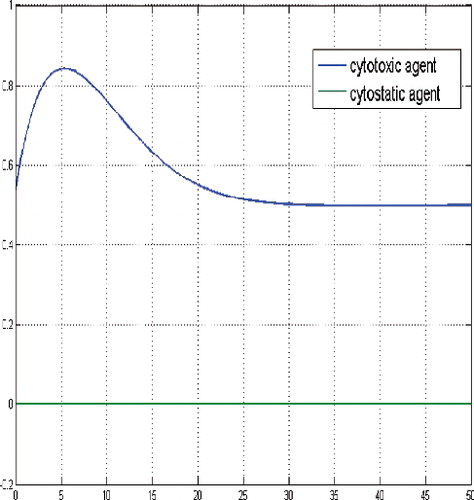
Figure 12. Adjoint functions for a sufficient large budget and and initial state near the equilibrium level, here N(0) = (3, 3, 3).
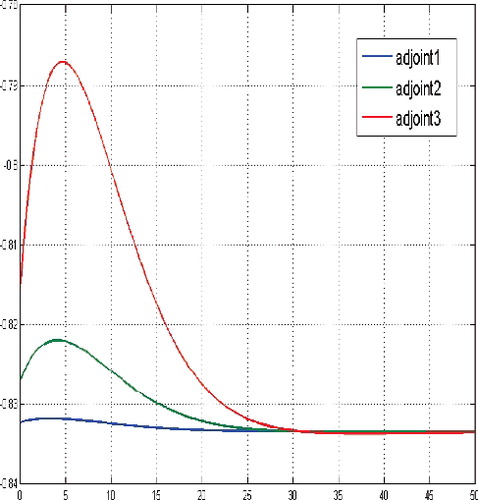
Figure 13. States for a sufficient large budget and a small tumour cells population relatively compared to the level of the equilibrium, N(0) = (0.3866, 0.1722, 0.4412).
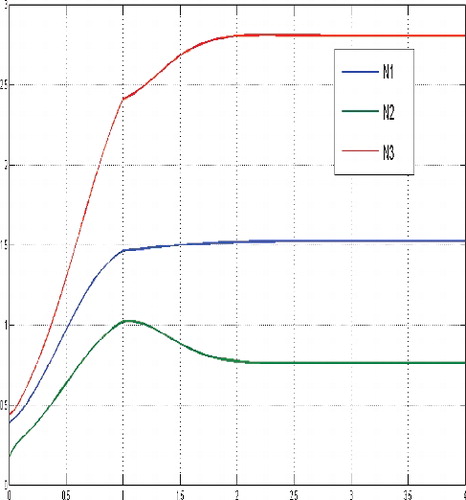
Figure 14. Controls for a sufficient large budget and a small tumour cells population relatively compared to the level of the equilibrium, N(0) = (0.3866, 0.1722, 0.4412).

Figure 15. Adjoint functions for a sufficient large budget and a small tumor cells population relatively compared to the level of the equilibrium, N(0) = (0.3866, 0.1722, 0.4412).
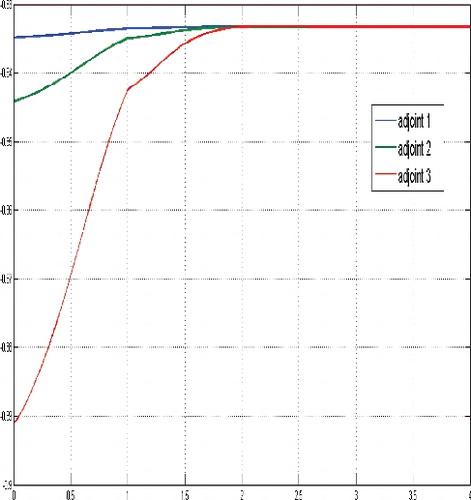
Figure 20. Phase diagram, slice plane (N 1,N 3), case of the threshold budget (long path), d = 500 (long path), d = 500.

Figure 21. Phase diagra2, slice plane (N 1,N 3), case of the (long path), d = 500e threshold budget, d = 500.
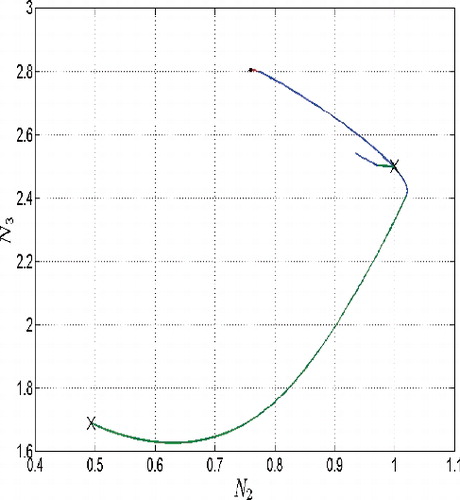
Figure 22. Phase diagram, slice plane (N 1,N 2), case of budget constraint which does not become active (shorter path going near by the equilibrium), d = 500.
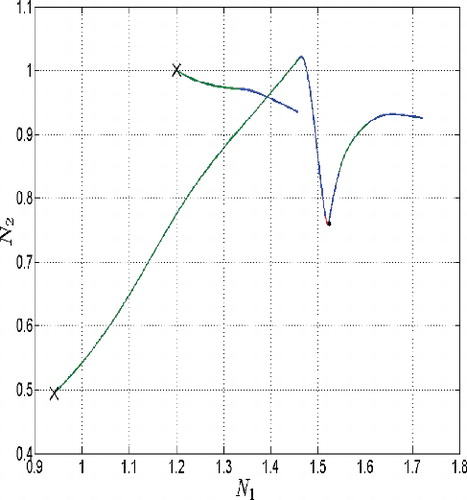
Figure 23. Phase diagram, slice plane (N 1,N 3), case of budget constraint which does not become active (shorter path going near by the equilibrium), d = 500.
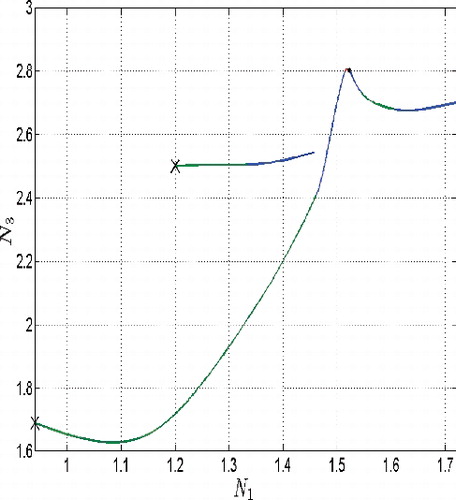
Figure 24. Phase diagram, slice plane (N 2,N 3), case of budget constraint which does not become active (shorter path going near by the equilibrium), d = 500.
